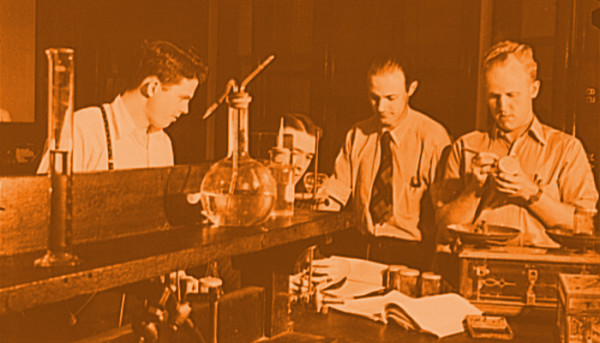The only thing standing between us and drinking at the campus pub was getting Professor Sifferlen to sign off on our lab project. As soon as we convinced him that our digital wattmeter was measuring power accurately, we’d have a solid hour of tossing back suds before the pub closed.
My team explained how the circuit worked. We showed him how the display counted up from zero to nine before repeating the sequence.
“Good,” he said while pressing the reset button. “If it’s properly calibrated, it’ll return to zero in ten minutes.”
My lab partners high-fived each other in anticipation of bellying up to the bar after a long school week. But that’s when one of us noticed the number on the display.
“It’s running too fast!” he said.
Sure enough, instead of registering a new value each minute, our circuit appeared to be running at nearly twice that speed. It didn’t take long to figure out why. One of the resistors in the circuit had the wrong value!
The fix was simple enough. All we needed to do was turn off the circuit, replace the resistor, restart the circuit, flag down the professor, reset the timer, and wait ten more minutes for validation. Since such a solution would devour precious drinking time, however, we sought an alternative.
Engineers are trained to solve problems. Since we knew both the time the meter should read zero and its erroneous rate, a simple algebraic calculation determined when to reset the circuit and put us back on track. It worked.
With a minute left to go, we called out, “It’s coming up on ten minutes, Professor.”
“I’ll be there soon,” he said, as he helped another team.
Uh-oh. Operation Reset only worked if Professor Sifferlen saw the number at exactly the right time. If he came any later, our little deception would have been exposed because math plays no favorites. The same algebra that we used to reset the circuit could also be used to calculate its flawed running speed.
We pressed our lobbying. “Thirty seconds, Professor!”
“Calm down, guys,” he grumbled. “I’ll be there in a minute.”
He didn’t and our meter blew past zero. Our hearts sank as we realized that our brilliant plan had just turned disastrous. He might fail us all.
We tried to play it cool when he finally arrived.
Professor Sifferlen compared the number on the display with his watch. He paused for a moment, then made some mental calculations. “It seems to be running a little fast,” he said, looking over the top of his reading glasses and expecting an explanation.
The jig was up. We needed to come clean.
We told him about the resistor. We showed him how the meter was running at a speed consistent with that wrong resistor value. Of course, we omitted the whole ‘resetting the circuit’ part of the story, but his penetrating gaze confirmed that he’d already figured that part out.
Our guilt-ridden shoulders slumped as we waited for his verdict.
“Okay,” he said. “You found the problem, diagnosed it, and know how to fix it. Good work.”
We stood in silence. Good work? What did that mean? Did he want us to fix it? Were we done?
“What are you waiting for?” Professor Sifferlen said. “Don’t you have a beer to catch?”
* * *
Stories are driven by the decisions characters make in the pursuit of their goals. As students, our motivation was to get to the pub before it closed. As a teacher, Professor Sifferlen wanted us to learn something. In a weird way, we both got what we wanted.
What are your customers’ motivations? What are your company’s motivations? Understanding both will help you shape your business stories.
Photo Credit: Library of Congress
